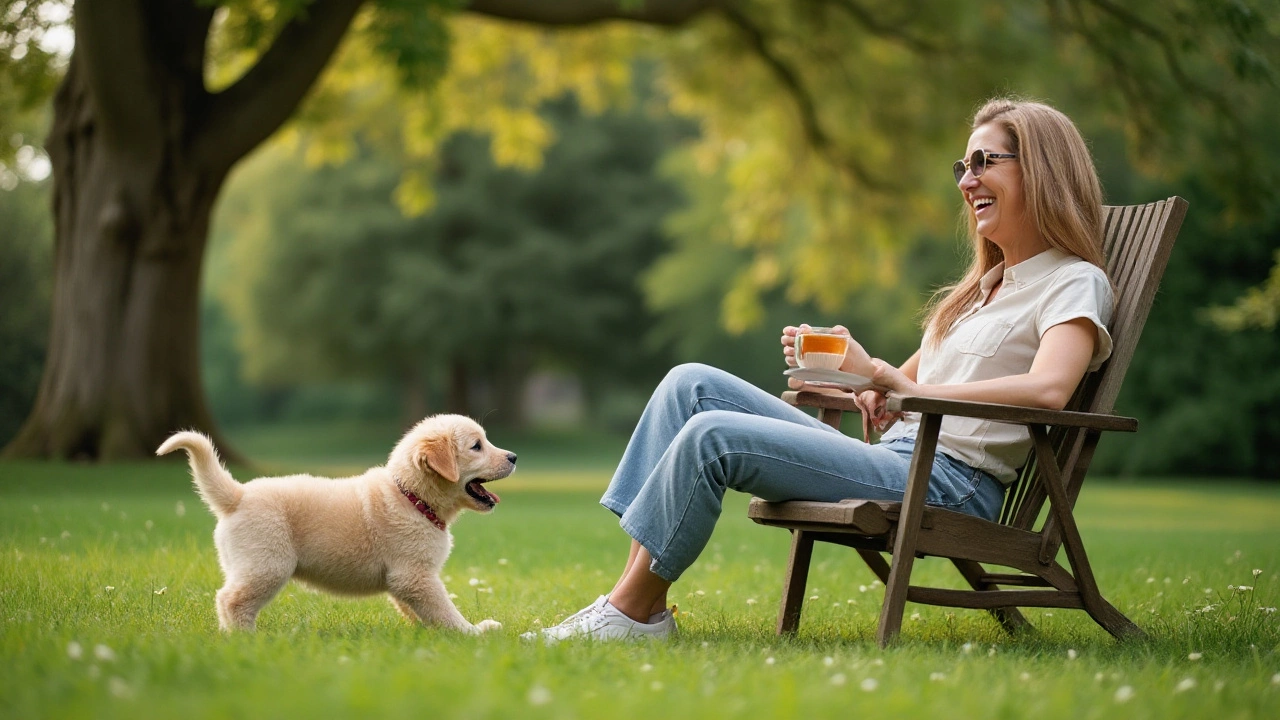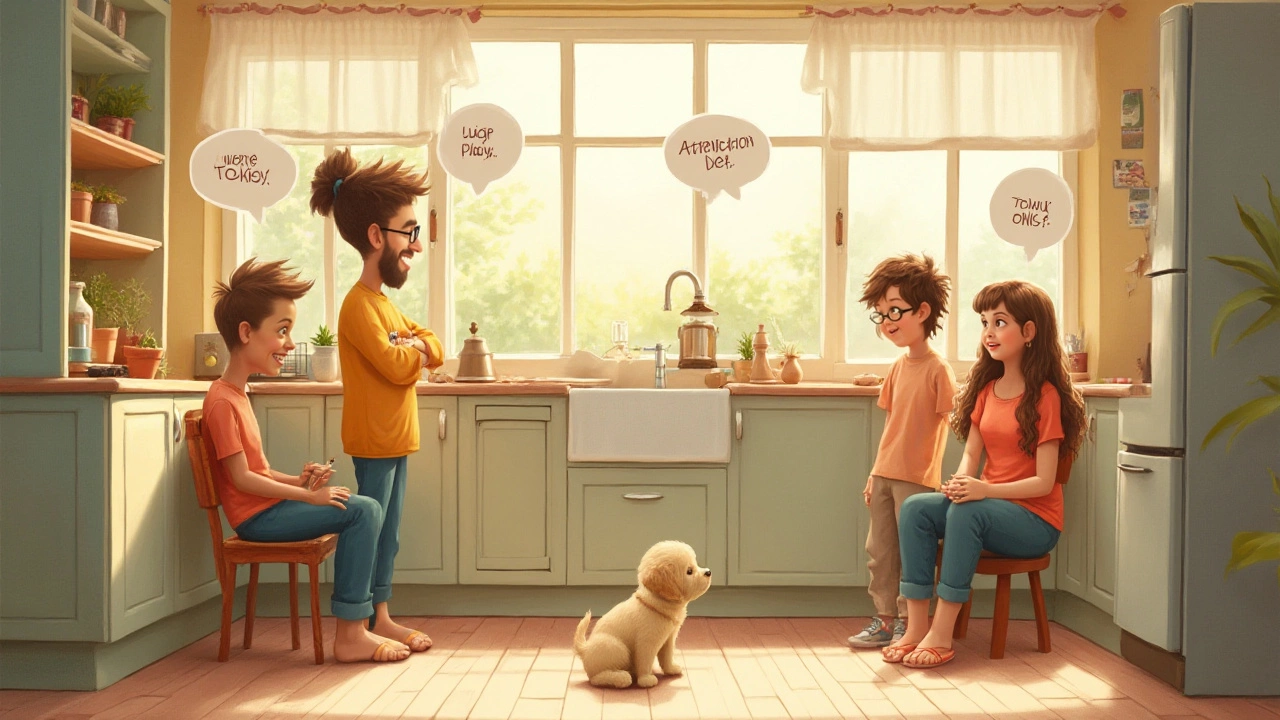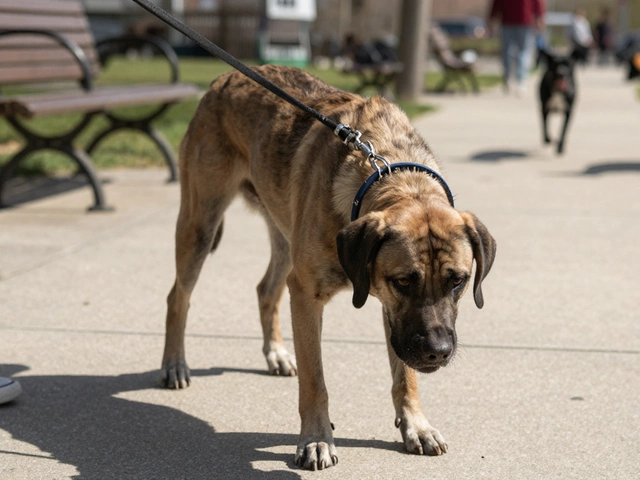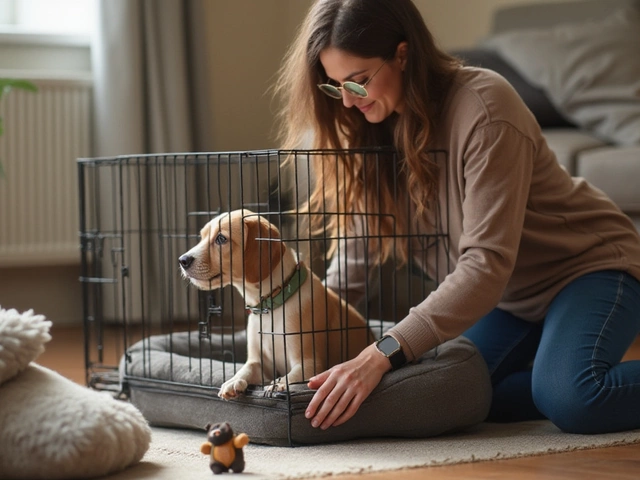It's heart-wrenching to hear the plaintive cries of a puppy, isn’t it? If you've recently brought a new furry friend into your home, you've probably faced the question of whether to pick them up every time they let out a whimper. Like human babies, puppies use crying as a primary form of communication. But the key is to understand what they are trying to tell us.
While it might be tempting to scoop up your little bundle of joy at every peep, doing so might not always be in their best interest. There's a delicate balance to strike between offering comfort and fostering independence. Knowing when to step in and when they are best left to learn on their own is crucial in their developmental journey.
This guide offers insights into the reasons behind those cries and provides you with a thoughtful approach to handling them. From assessing whether your pup is safely tucked in to understanding specific needs, you’ll find valuable tips to ensure your puppy not only feels loved but also grows up to be a confident and happy dog.
- Understanding Why Puppies Cry
- Assessing the Situation
- When to Pick Up Your Puppy
- Encouraging Independence
- Creating a Comforting Environment
Understanding Why Puppies Cry
Imagine hearing a symphony of whimpers and barks from your new companion. It's not simply background noise; it is your puppy's way of reaching out to communicate a wide array of needs and emotions. Puppies, like humans, are born with limited means of expression, and crying is one of their earliest modes of conveying what they feel. Whether it's discomfort, fear, or a plea for attention, these sounds are integral to understanding and addressing your pet's needs. Recognizing why puppies cry is the first step in building a compassionate and responsive relationship with them.
The most common reason puppies cry is their innate need for attachment and security. Separated from their mother and littermates for the first time, a puppy finds itself in a foreign environment – your home. This transition can be profoundly unsettling. This natural response ensures they receive the necessary warmth and protection crucial for survival in the wild. In the comfort of your home, this translates into the need for consistent affection and reassurance. Responding to these cries with empathy helps build trust and security in your pet's new world.
Beyond seeking security, puppies may cry out of hunger or thirst. Rapid growth spurts mean they need more frequent nourishment. A well-fed puppy is often a quiet and content puppy. Ensuring that they have access to fresh water and food will quickly reduce cries associated with physical needs. To help manage feeding schedules, you might consider keeping a detailed log. This can prevent overfeeding while ensuring they get the nutrition they require to thrive.
Crying can also be an indicator of distress due to discomfort or illness. A sharp or persistent cry could signal pain or a medical issue that requires attention. As a proactive pet owner, it's wise to learn about common puppy ailments and be vigilant about changes in behavior or appetite. If such cries persist, a timely visit to the veterinarian can prevent minor issues from escalating into serious problems. Paying attention to these signals and responding quickly reinforces your bond as your puppy learns that you are a source of help and protection.
Still, not all cries should be responded to immediately with picking up. Behavioral cries, like those for attention, might be a chance for you to train your pet in healthy independence. Encouraging a puppy to self-soothe by providing comforting toys or a familiar blanket can help develop resilience. Over time, your pup will learn to navigate minor anxieties on its own, fostering maturity and emotional growth. A balanced approach that evaluates each situation thoughtfully will teach them to trust their surroundings while also knowing that you are never far from offering comfort when truly needed.
According to Dr. Jane Metcalf, a leading veterinary behaviorist, "Understanding the nuances of a puppy's cry is crucial. Every whimper or yap tells a story, and as pet owners, it's our privilege to decode these narratives to nurture well-adjusted adult dogs."
Assessing the Situation
When a puppy starts crying, it’s important to pause and assess why it's happening. Puppies, like human infants, rely heavily on sound to communicate their needs and feelings. They might be expressing discomfort, fear, or a request for attention. First, consider the crying puppy's environment. Is the room too hot or too cold? Puppies are sensitive creatures, and subtle changes in temperature can affect them significantly. Ensure that the room is comfortable, not too drafty, and not in direct sunlight. Are there any loud noises that might be unsettling? Some puppies are more sensitive to sounds than others, and everyday household noises could easily alarm them.
Next, examine their immediate needs. Hunger and thirst are common reasons for crying, and attending to these basic needs is vital. Puppies have small stomachs and need frequent meals throughout the day. If your puppy hasn’t eaten recently, a small portion of food might be what it’s crying for. Alternatively, if meals are being consistently refused, there could be an underlying issue that needs the attention of a vet. Also, consider if it might be potty time. Puppies have tiny bladders, and needing to relieve themselves could be a reason for distress. Regular bathroom breaks are essential to prevent accidents and ensure comfort.
Beyond their physical needs, emotional comfort is key. Puppies crave connection and often feel anxious when left alone for too long. This kind of crying typically occurs when there's a change in routine or environment, like their first few nights in a new home. Consider having a piece of clothing with your scent near their sleeping area, as it can provide a comforting presence and alleviate their distress. If the crying continues unabated, it might be wise to gradually introduce them to being alone, building a sense of independence with time. Dog behavior experts suggest starting in short increments to help your puppy adjust without overwhelming it. This way, your puppy begins to learn that being alone isn't a cause for alarm.
"Young puppies often cry because they are full of energy that they haven't yet learned to channel," explains Dr. Rebecca Simms, a well-respected veterinarian and animal behaviorist. "Ensuring they get sufficient exercise and mental stimulation is critical to minimizing stress-induced cries."
Finally, consider the age and breed of your puppy. Different breeds have different temperaments, energy levels, and needs. A highly active breed might cry out of boredom and need more stimulation, while a more reserved pup could be voicing their desire for quiet or comfort. Additionally, very young puppies who have just been separated from their mothers and siblings may experience separation anxiety, a common cause of crying that requires gentle handling and reassurance as they adjust to their new environment.
| Common Reasons for Crying | Puppy Needs |
|---|---|
| Hunger/Thirst | Frequent small meals |
| Potty Needs | Regular bathroom breaks |
| Loneliness | Gradual alone time training |
| Temperature | Comfortable room climate |

When to Pick Up Your Puppy
Deciding when to pick up your puppy is an art as much as it is a science. It often comes down to reading the signs that your little one is exhibiting and responding accordingly. But, believe it or not, puppies learn a lot from their environment and need some gentle guidance to discover the vast world around them. Picking them up at the right time ensures they grow secure and less anxious about new experiences. Puppies could be crying because they are hungry, cold, scared, or even in pain. In these cases, a swift and reassuring presence is vital. It’s important to know that during their early weeks, being held helps them feel secure and builds trust between you and your puppy.
But not every sound requires you to immediately scoop them up. Occasionally, it is more beneficial for their development to let them explore a little longer. For instance, if they are in a safe space and there's no obvious distress, it might be worth waiting a second before rushing to their side. It allows them to become comfortable with being alone momentarily and develops their independence. This doesn't mean leaving them to cry indefinitely, but rather gauging whether their cries are due to discomfort or a simple call for attention. One expert, Dr. Jane Goodall in her book "The Animal Kingdom", said,
"Building resilience in puppies involves sometimes letting them face small, controlled challenges on their own."This was related to her observations on the natural development in young animals.
Knowing the balance of when to comfort and when to let them be is key. If your puppy shows signs of real distress, such as shivering or intense vocalizing, picking them up is undoubtedly the best choice. Conversely, if it's more of a gentle whimper, you might observe a little longer to assess their needs. These decisions not only bolster their self-reliance but enrich the quality of your time spent cuddling when they truly require it. As you nurture them through various stages, this practice of selective comforting becomes integral to building a trusting relationship.
To help know when to respond, consider keeping a simple table or chart to track your puppy’s cries and your responses, as follows:
| Time | Reason for Crying | Response |
|---|---|---|
| Morning | Hunger | Fed and picked up |
| Afternoon | Exploring whining | Observed from distance |
| Night | Cold and lonely | Picked up and comforted |
Having this log can not only aid in spotting patterns but also provides peace of mind that you're nurturing a healthy and happy puppy. Ultimately, this knowledge enhances your shared moments and allows your little friend to grow into a confident and assured dog.
Encouraging Independence
Teaching your puppy to be independent is a vital part of its growth and development. Puppies, like human children, require guidance to become well-adjusted adults. Encouraging puppies to explore their surroundings on their own is an excellent way to build their confidence. Allowing them to have alone time in a safe, comfortable spot in the home helps them feel secure when you're not around. This is especially important when they start experiencing mild separation from their family. By slowly increasing the amount of time they spend alone, the puppy learns that being on its own is a normal and safe experience.
One practical tip is to introduce a dedicated play area where toys and safe objects are readily available for your puppy. Providing a range of toys encourages curiosity and problem-solving skills. These are fundamental parts of developing independence. Make sure the environment is both stimulating and secure so that your puppy feels compelled to play but never threatened. Over time, your puppy will associate this area with fun and safety, allowing them to feel at ease even in your absence. As noted by Cesar Millan, the well-known dog behaviorist, "A confident dog is not necessarily one that relies on its human for everything but knows how to enjoy its own company too."
Socialization is another crucial aspect of building independence. Exposing puppies to different environments and situations, including other animals and people, helps prevent anxiety and builds resilience. Begin with short outings and gradually expand their boundaries as they become more comfortable. Socialization should always be a positive experience. Use treats and praise to reward good behavior, reinforcing the notion that new experiences are enriching rather than scary. With patience and consistency, your pup learns to approach new situations with confidence, paving their way to a well-rounded adulthood.
Training plays a significant role in encouraging independence. Start by teaching basic commands such as sit, stay, and come, fostering not just obedience but also independent thinking. Training sessions should be short and fun, making learning an enjoyable process. Positive reinforcement — using treats and praise — is far more effective than punishment. As your puppy masters these skills, gradually introduce more complex commands. The self-assurance gained during training supports your puppy’s ability to function confidently when alone. Consider incorporating enrichment activities like puzzle feeders or scent games, which challenge their mind and encourage problem-solving abilities independently.
Encouraging independence requires patience and love. There might be setbacks or days when your puppy needs extra attention and reassurance. It is important to be consistent yet flexible in your approach, adapting to your puppy's unique personality and needs. Remember, building independence is not just about the puppy learning to be alone. It's about nurturing a sense of security and contentment, ensuring they grow into a happy, confident dog that thrives both with and without your company.

Creating a Comforting Environment
Caring for a new puppy goes beyond just meeting their basic needs; it extends to fostering a space where they feel truly at ease. Your puppy's first experience in a new home is pivotal for their emotional development. Establishing a comforting environment starts with providing boundaries that are both safe and reassuring. For instance, designating a quiet corner as their personal haven, equipped with a cozy bed and a few chew toys, can help your puppy feel more relaxed and secure, slowly mitigating those heart-wrenching cries.
It's essential to maintain consistency in this space, as puppies thrive on routine. Knowing they have a predictable zone where they can retreat to whenever they feel overwhelmed is comforting. Additionally, consider using calming scents like lavender which are known to reduce stress in dogs. Keeping the sounds familiar is also crucial; what might be background noise to us can be distressing to a puppy. Therefore, playing soft classical music or white noise can have a soothing effect. As noted by the American Kennel Club, "Soothing music can decrease stress levels and even keep them quiet and peaceful."
Temperature control plays a significant role too. A room that's too hot or cold can be uncomfortable and cause restlessness in puppies. Make sure the space is neither draughty nor overly heated, striking the right balance to promote uninterrupted sleep. Puppies are social animals and they find comfort in gentle, reassuring tactile contact. You can provide warmth by occasionally covering them with a soft blanket, resembling the closeness they would have experienced with their littermates. This nurturing gesture supports the bond you are building and further contributes to a comforting environment.
Including a set routine for feeding and sleep times is also part of creating a comforting environment. Puppies find security in knowing what to expect and when to expect it. Gradually conditioning them to the sounds of your daily activities also helps. Watching your puppy grow confident in their space is rewarding, knowing that your thoughtful environment is encouraging healthy, happy development. As we provide the best possible start for them, remember that every signal we give through our environment and actions is building their trust and security.







